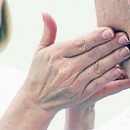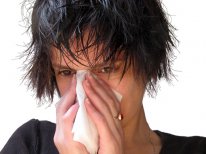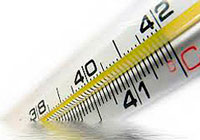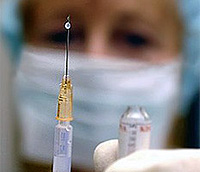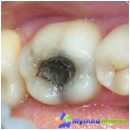Durable and efficient antimicrobial copper surfaces provide a technical solution that serves as an additional line of protection against pathogens and their distribution.
Content
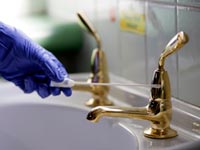 A unique analysis of economic aspects of antimicrobial copper to prevent nosocomial infections (HCAIS) in health care is available on June 25, 2013 on the International Conference on Control and Prevention (ICPIC) in Geneva. Analysis demonstrates high efficiency and quick payback of the cost of a new technical solution.
A unique analysis of economic aspects of antimicrobial copper to prevent nosocomial infections (HCAIS) in health care is available on June 25, 2013 on the International Conference on Control and Prevention (ICPIC) in Geneva. Analysis demonstrates high efficiency and quick payback of the cost of a new technical solution.
Economic appraisal assessment is usually given drugs or therapeutic procedures, but in this study of the Consortium of Healthcare Economics of York (YHEC) at the University of York in the UK The subject has become the economic advantages of the use of engineering and design approaches to the fight against infections as a result of deploying touch surfaces from antimicrobial copper Intensive therapy (IUIT).
HCAIS pathogens can survive in the environment for several days and even months, providing continuous replenishment of infections on the surfaces of frequent touch. Durable and efficient antimicrobial copper surfaces provide a technical solution that serves as an additional border of protection against these pathogens and this method of their distribution. BioGlift on the surface of the touch of copper and copper alloys (t. N. «Antimicrobial copper) decreases continuously to values constituting less than 10% of the original, as proven by clinical trials in Chile, Great Britain and US. In addition, the recently published data of the study of the US Department of Defense, conducted in three different departments of intensive therapy shows that the replacement of the six most likely to touch the surfaces around the patient to the same, but from antimicrobial copper, leads to a decrease in secondary infection with hospital infections by 58%.
In the YHEC study, the economic efficiency of such interference was assessed, the costs of new components were compared with the improvement of patient treatment results and other tangible benefits. The study made it possible to draw conclusions based on the model in which the latest published information on the effectiveness of antimicrobial copper is used. Comparison demonstrates a quick return of investments in re-equipment of premises, namely the installation of antimicrobial elements from copper. Analysis shows an impact on the number of bed-days and the number of lifestyle listed (QALY). The model is simple, «transparent» and fully confirmed by references, and flexible settings allow you to enter data for use in specific conditions of any LPU.
Based on the data typical of the UK LPU, the model predicts that the cost of replacing the six key surfaces of touching in 20 beds in the wards of intensive therapy on antimicrobial equivalents from copper will pay off in less than two months due to the decrease in the durable infection and, as a result, reducing deadlines stay patients in hospital.
Dr. Matthew Taylor, director YHEC and one of the authors of the report, notes: «... After the first two months of payback, saved funds will accumulate obviously and serve other useful goals...» .
 For five years, such a copper solution will save almost 2 million. pounds sterling due to HCAIS decrease compared to traditional components, if copper is installed during the construction of the LPU or planned repair. While the total costs for copper solutions are 30,600 pounds more than when using traditional components, in the calculation of one patient for 5 years, they will be 94.10 pounds of sterling. Savings from reducing the level of infection have repeatedly more.
For five years, such a copper solution will save almost 2 million. pounds sterling due to HCAIS decrease compared to traditional components, if copper is installed during the construction of the LPU or planned repair. While the total costs for copper solutions are 30,600 pounds more than when using traditional components, in the calculation of one patient for 5 years, they will be 94.10 pounds of sterling. Savings from reducing the level of infection have repeatedly more.
In conclusion, Dr. Taylor notes: This is not a typical health assessment for health, as there are additional and mixed factors that concern responsibility for the spending of budget funds in hospitals. First of all, this is a technical solution requiring budget costs (impact on structures / real estate), but with a positive effect on the prevention of the spread of infection, the cost of treatment and clinical outcomes. Therefore, it requires a high degree of mutual understanding and cooperation at the highest levels of decision-making in the health care system and LPU.


